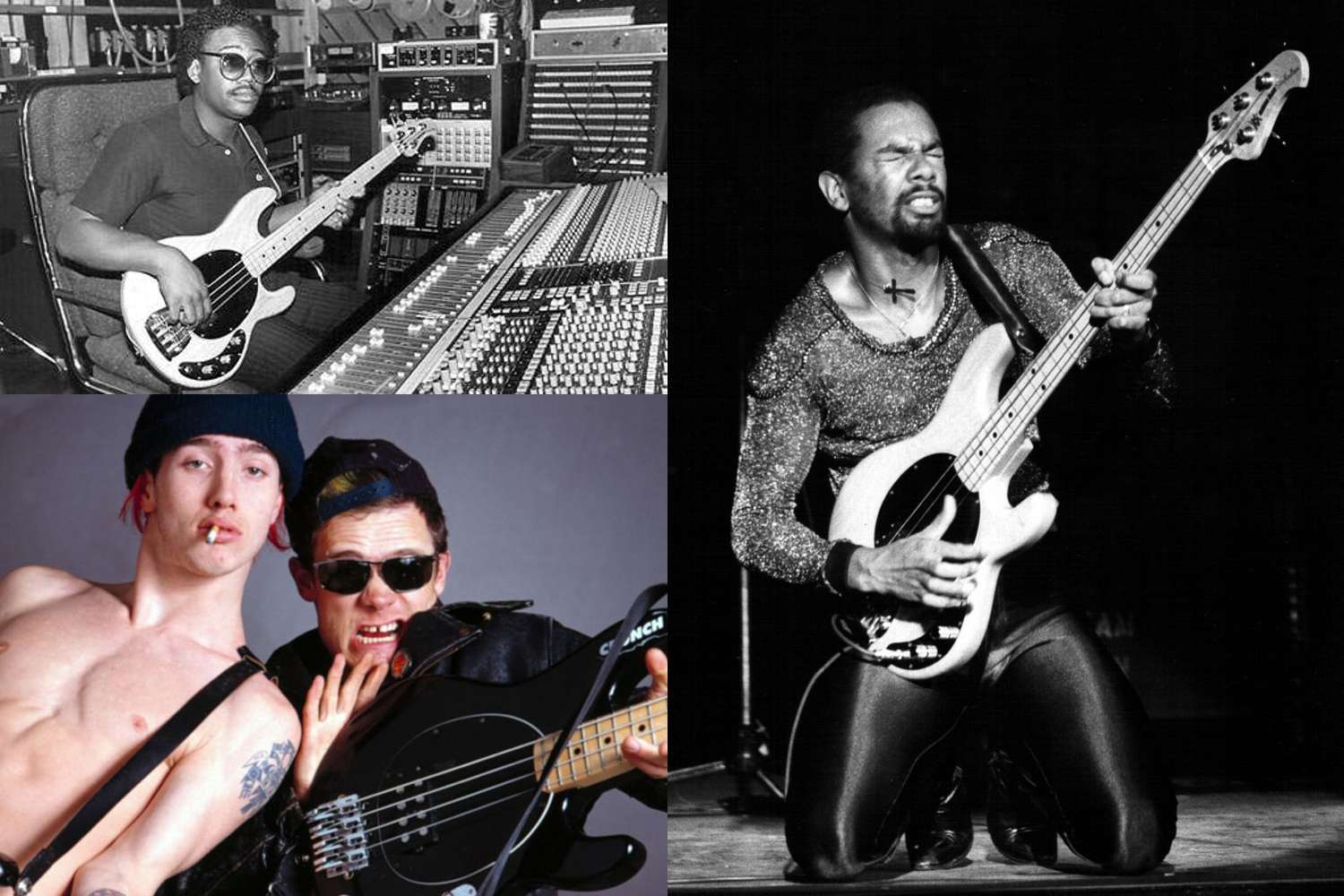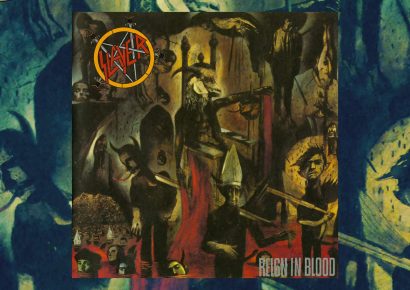The celebrated Music Man StingRay bass has seen many brilliant bassists' pair of hands over time, here are some of the best.
Leo Fender, Tom Walker, and Sterling Ball designed the StingRay bass which first appeared in 1976 and included a raft of electronic improvements and physical attributes that set it apart from other Fender-inspired designs. Featuring a heavy satin finish on the back of the neck to allow effortlessly sliding up and down during play, a symmetrical egg-shaped pick-guard, affectionately known “the toilet seat lid”, separate chromed “boomerang” control plates, and its distinctive “3+1” headstock.
Read up on all the latest features and columns here.
We’re taking a little break here at Mixdown and so should you. We’re reposting some old favourites of yours and ours!
Over the next decade, the StingRay came to be recognised by bassists for its sheer might and surprising sonic versatility, worming its way into the hands of bassists in rock and punk circles before becoming one of the defining bass sounds of the alternative boom in the ’90s.
Today, we’re exploring 10 of the greatest bassists to have ever utilised a StingRay across a range of genres, celebrating their own unique styles and how they’ve used the bass to carve out their own sonic identity over time.
Flea
Although he was prone to experimenting with other basses in the studio, Red Hot Chili Peppers bass guru Flea favoured the Music Man StingRay as his primary live instrument from the group’s earliest days right up until the recording of 1999’s Californication. The StingRay’s prominent mid-heavy tone proved to be a perfect pairing with Flea’s dynamic slap style and mammoth Gallien Krueger backline setup, allowing his thumping, percussive style to slice through the mix for tracks like ‘Aeroplane’ and ‘Higher Ground’.
Bernard Edwards
A legitimate titan in the minds of any bass purist, Bernard Edwards was best known for being the bassist for Chic from their inception until his untimely death in 1996, and is regarded as one of the most influential musicians from his era. Revered for his funky feel and idiosyncratic ‘chucking’ right-hand technique, Edwards is considered to be one of the earliest proponents of the Music Man StingRay, stringing the instrument with flatwounds in order to trim some of the natural snap of the preamp and create his signature plucky tone as heard on ‘Le Freak’, ‘Everybody Dance’, and ‘Good Times’.
Louis Johnson
Another early proponent of the Leo Fender-designed instrument, funk mainstay Louis Johnson was a StingRay player from its introduction until his death in 2015, and it’s arguable that he could even be the instrument’s most iconic player. Nicknamed ‘Thunder Thumbs’ due to his mastery of slap bass and renowned among players for his biting, mid-high heavy tone, Johnson famously used his StingRay on Michael Jackson’s seminal solo efforts Off The Wall and Thriller, with the instrument most notably appearing on the era defining smash hit ‘Billie Jean’.
Joe Lally
As one of the founding members of seminal Washington DC post-hardcore act Fugazi, Joe Lally’s influence as a bassist in punk and hardcore circles simply can’t be understated. Favouring a highly melodic, down-stroked style, Lally adopted the Music Man StingRay as his weapon of choice for many of the band’s most adored records, including Repeater and Red Medicine, with the biting tone of the bass aiding in shaping Lally’s iconic bass tone on the track ‘Waiting Room’ – undeniably one of the most menacing basslines ever.
Gail Ann Dorsey
One of the most prolific session bassists of the last thirty years, Gail Ann Dorsey has shared stages with everyone from Tears For Fears and Lenny Kravtiz to Boy George and David Bowie, with whom she played with from 1995 until the British icon’s death in 2016. For the majority of her onstage and studio work, Dorsey favours a Music Man StingRay, saying back in 2015 that it “is the bass that has helped me form and shape my own sound and sharpen my skills. It may have been the StingRay looks that first attracted me, but I have personally come to know this instrument as one of the most versatile, easy to play, beautifully crafted, and greatest sounding basses ever made.”
Pino Palladino
Possibly the most versatile bassist of all time, Pino Palladino has played with everyone from The Who and John Mayer through to D’Angelo and Erykah Badu, with his irresistibly groovy technique becoming an endless source of fascination among emerging bassists in recent years. While he’s more likely to be seen rocking a P Bass these days, Pino’s big break came through his beautiful, melodic bass work on Paul Young’s cover of ‘Wherever I Lay My Hat’, where he used a fretless 1979 StingRay and a Boss OC-2 to sublime effect, instantly writing himself into session bassist history in the process.
Tim Commerford
As the four-string phenom for bands like Rage Against The Machine, Audioslave, and Prophets Of Rage, Timmy Commerford has always required a strong, punchy bass tone with plenty of nuance to provide the perfect bedrock for Tom Morello’s obtuse shredding. Although he’s partial to Jazz Basses, Commerford’s typically seen rocking a number of StingRays, favouring both standard and dual humbucker models depending on the song or tuning. Throughout Rage Against The Machine’s glory days, Commerford favoured a natural finish StingRay without the pickguard, with the distinctive tone of the bass being heard on tracks like ‘Know Your Enemy’ and ‘Bulls On Parade’.
Kim Deal
During her stint as the bassist for Pixies, Kim Deal played a number of basses, including a Fender Precision and an Aria Pro II Cardinal. However, it was her use of the StingRay that really made punters turn their heads, with Deal switching out her P Bass in favour of the active style instrument when recording the band’s 1990 album Bossanova. After becoming familiar with the StingRay in the studio, Deal ended up taking it on tour with the band, where it became her primary live instrument with the Pixies until the dissolution of the band a year afterwards.
Tony Levin
There’s no other way to put it: Tony Levin is an absolute king of bass, with his dynamic playing style being heard on a number of classic records from John Lennon, Peter Gabriel, King Crimson, Steven Wilson, and more. Although he’s often associated with quirky gear such as the Chapman Stick or the NS Upright Bass (or even his bizarre ‘funk fingers’ contraption), Levin’s been a longtime advocate for the Music Man StingRay, playing a number of four and five string models over the years and enjoying a prosperous working relationship with the company since the late ‘70s.
Joe Dart
Without a doubt the most exciting emerging player of the 21st century, Joe Dart’s slinky bass playing in Vulfpeck has seen him receive acclaim from fans all over the world, fusing impeccable groove with impressive technique to make for one hell of a combo. While he was frequently seen sporting a Jazz Bass around his shoulder in the band’s early days, Dart’s recently joined the Ernie Ball Music Man family as a StingRay endorsee, pairing with the company to make his own stripped StingRay signature model, which he can be heard shedding in the video below.
Revisit our list of the most iconic Telecaster players of all time.

